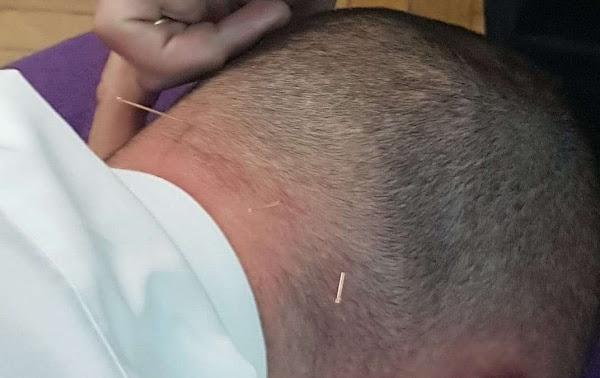Acupuncture
Contact UsRelieve pain and muscle tension with expert medical acupuncture and dry needling in Stanford-le-Hope. Book your treatment with a qualified osteopath today.
Medical Acupuncture & Dry Needling in Stanford-le-Hope
Medical acupuncture, also known as dry needling, is a modern therapeutic technique that involves the insertion of ultra-fine, solid (non-hollow) needles into specific points of the body to relieve pain, reduce muscle tension, and improve mobility. This evidence-based treatment has been widely practiced by healthcare professionals—including osteopaths—since the 1960s.
Unlike traditional Chinese acupuncture, which is based on balancing energy flow (chi) through meridians, medical dry needling focuses on targeting myofascial trigger points—tight bands of muscle that can cause pain and restrict movement. The aim is to stimulate a local twitch response, which helps reduce pain and restore normal muscle function.

How Does Medical Acupuncture Work?
Dry needling is believed to provide several therapeutic benefits, including:
-
Increased local blood flow to support tissue healing
-
Desensitization of nerve endings to reduce pain perception
-
Stimulation of endorphin release to enhance natural pain relief
For enhanced results, dry needling can also be combined with cupping therapy, which further increases circulation and supports the body’s healing process.
Book a Dry Needling Appointment in Stanford-le-Hope
Curious about how medical acupuncture in Stanford-le-Hope can help with your pain or mobility issues? Ready to book a session? Get in touch today—send a message, or call/text using the number above to schedule your consultation.
Cupping Therapy
Cupping Therapy – Ancient Healing for Modern Wellness
Cupping therapy is a traditional healing technique that has been practiced for thousands of years. This holistic treatment involves placing special cups on the skin to create suction, which may help improve blood circulation, reduce inflammation, relieve pain, and promote relaxation. It is often used as a natural alternative to deep-tissue massage.
While cupping has recently gained popularity among athletes and wellness enthusiasts, it has deep historical roots. The practice dates back to ancient Chinese and Middle Eastern medicine and was even documented in Egyptian medical texts as early as 1,550 BC.
Today, cupping therapy continues to be a sought-after treatment for boosting overall well-being, easing muscle tension, and supporting recovery—making it a timeless method in modern holistic health care.
Types of Cupping Therapy in Stanford-Le-Hope
At our clinic in Stanford-Le-Hope, we provide professional dry cupping therapy designed to relieve muscle tension, enhance circulation, and support your overall well-being.
There are two main types of cupping therapy:
-
Dry Cupping
-
Wet Cupping (not offered at this clinic)
Both techniques involve creating suction on the skin, which lifts the tissue and stimulates blood flow to the area. This natural therapy is known to reduce inflammation, ease tight muscles, and encourage healing.
Here in Stanford-Le-Hope, we specialise in dry cupping—a safe, non-invasive method that does not involve any cutting or blood removal. Wet cupping, which uses small incisions to draw blood, is not performed at our clinic for hygiene and safety reasons.
We use modern plastic cups with a rubber pump to create a consistent and comfortable vacuum effect. This approach ensures a more controlled treatment compared to traditional fire cupping methods. We also offer cupping massage, where the cups are gently moved across the skin to cover larger treatment areas.
For enhanced results, cupping therapy can be combined with dry needling, providing a powerful and holistic solution for pain relief and muscle recovery. This combination is popular among clients in Stanford-Le-Hope who are looking for effective, drug-free therapies to support their health.
Experience professional dry cupping therapy in Stanford-Le-Hope, Essex. Relieve pain, reduce tension, and boost circulation with safe, holistic treatment. Book your session today.
According to the British Cupping Society, cupping is commonly used to help manage conditions such as arthritis, fibromyalgia, chronic pain, and muscle stiffness.
Is Cupping Therapy Safe?
Yes. When performed by a qualified practitioner, cupping therapy is generally very safe. At our clinic in Stanford-Le-Hope, Essex, all treatments are carried out with the highest standards of care and hygiene.
The most common side effects include:
-
Mild bruising or redness where the cups were placed
-
Temporary skin discoloration
-
Slight tenderness post-treatment
Any other considerations or personal concerns will be discussed with you during your appointment to ensure the treatment is tailored to your needs and comfort.
Book Your Cupping Session in Stanford-Le-Hope Today
If you’re in Stanford-Le-Hope, Corringham, or the wider Essex area and are interested in learning more about how cupping can support your health, get in touch today. We’re happy to answer your questions or schedule your first session.
Contact Us
50, Poley Road,
Stanford Le Hope,
Essex SS17 0JJ
07711 521233
info@essexosteo.co.uk
Follow us
Find us on social media






